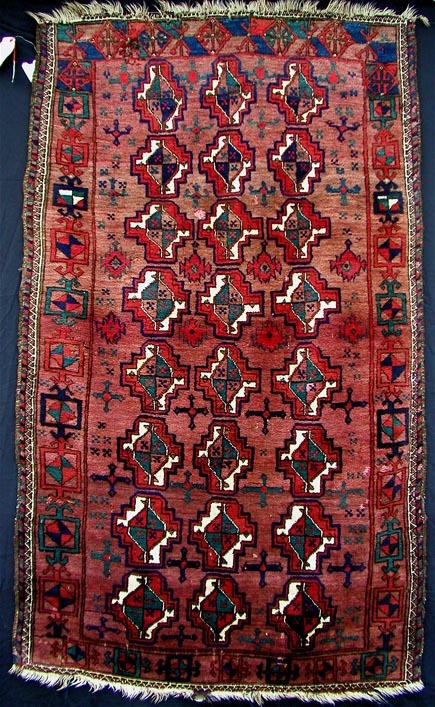A very loose rendering of turkmen guls, with some crosses and serrated motices strewin in between. One of a kind, and very old. bought this rug a few years ago from Michael Craycraft. He attributed it to the Jamshidi, a tribe which Jerry Anderson maintains does not weave at all (google 'from the horses mouth'), or only as copy artists. May be at the time this was made (about 150 years ago) they still did?
Measures 171cm(H) x 104cm(W) / 5'7"(H) x 3'5"(W). Off-white warps, somewith brown wool. Two brown wefts, sometimes light, sometimes dark brown wool. Knot density is 7.h, 9.v, not depressed, asymmetric oper to the right. The flat selvages have 4 cords the innermost thinner sometimes looks like just three cords. Original wrapping with darl goat hair in parts remaining, other parts rewqrapped with brown wool.
The colours are very nice and without doubt all natural. There are a strong indigo blue, a dark green, a vibrant red, dark brown, off white and the brownish purple madder red of the ground.
Very good pile for the age, very nice silky and glossy wool, but some moth damage, sone areas badly repiled (old and now faded) and some losses to ends. Handle is very flexible and soft.
I just quote Michael Craycraft's description as posted a few years ago on Cloudband:
The palette seen here, especially the purple field color, is unusual if not unique prompting the impression that this rug was made much further north than one usually expects to find a "Belouchi". The use of the chuval gul is not common either. In this case the shape of the gul is very tall and balanced like that of an early Turkoman chuval. The secondary guls, a chemche and an ashik, are something one finds in two different tribes. The chemche element would be a Jamshidi characteristic while the ashik is a mainstay of Hazarah work. Since both tribes have the same weave (the Jamshidi are considered an Hazarah tribe) I've favored the Jamshidi attribution based on the seemingly far north provenance. The Saryk type border seen at one end would support this contention; the Jamshidi are the only ally of this powerful 'Turkoman tribe.
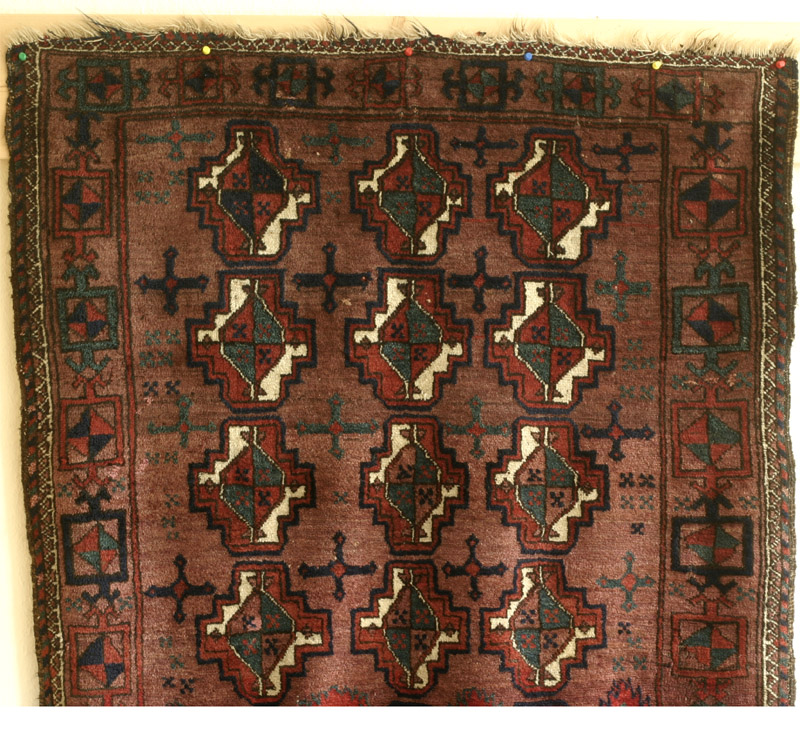
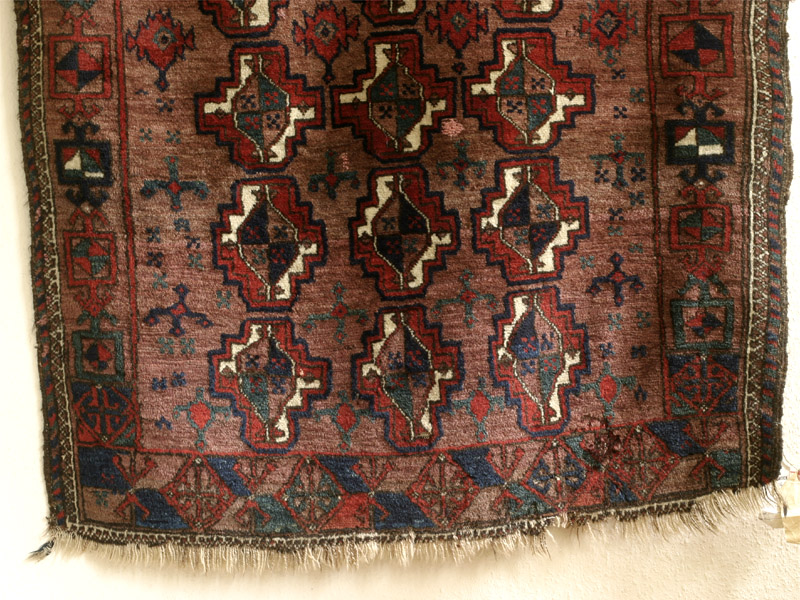
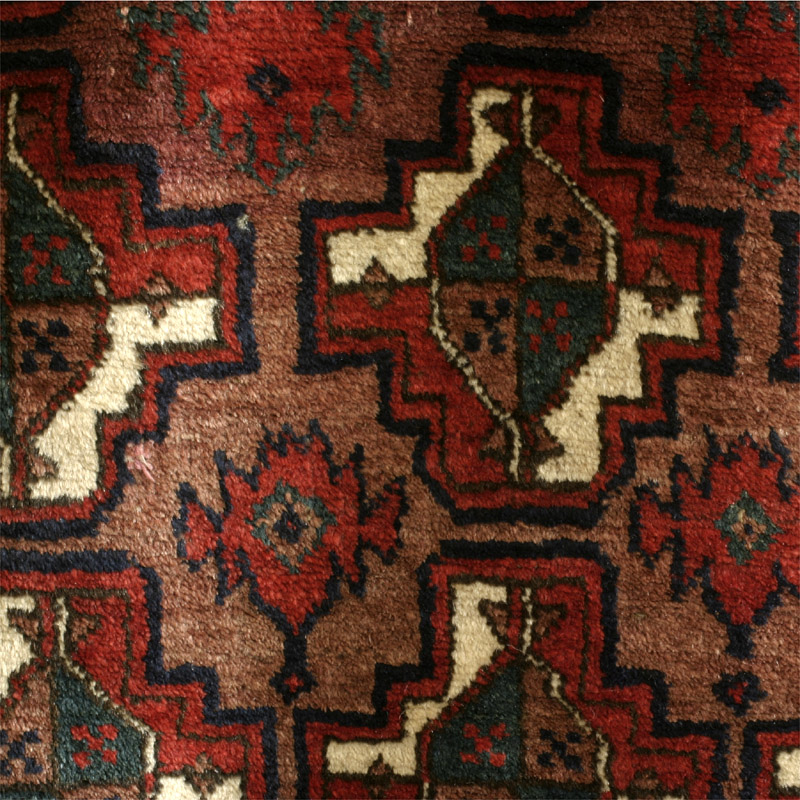
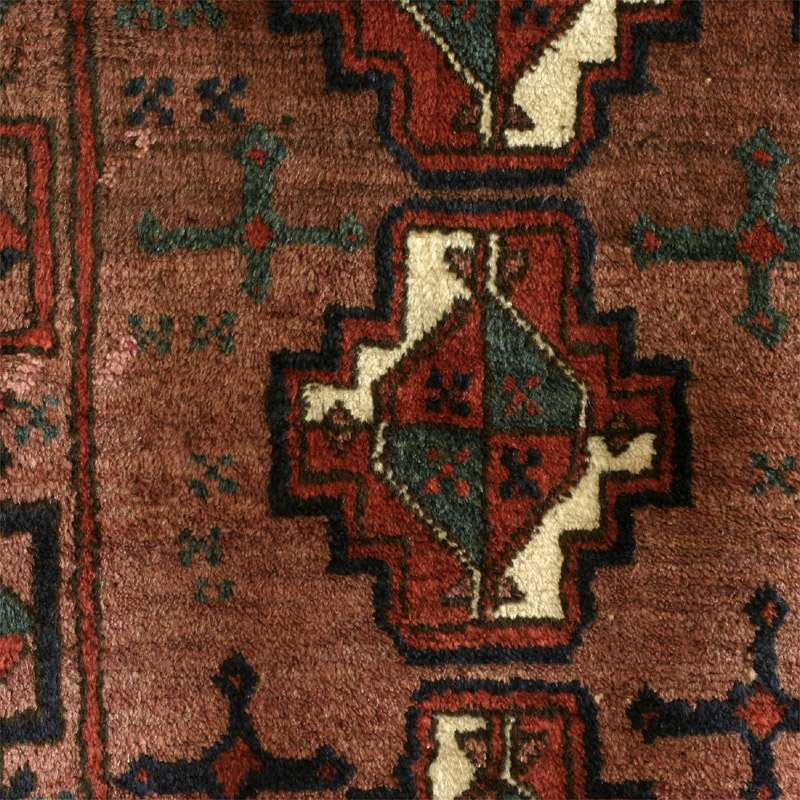

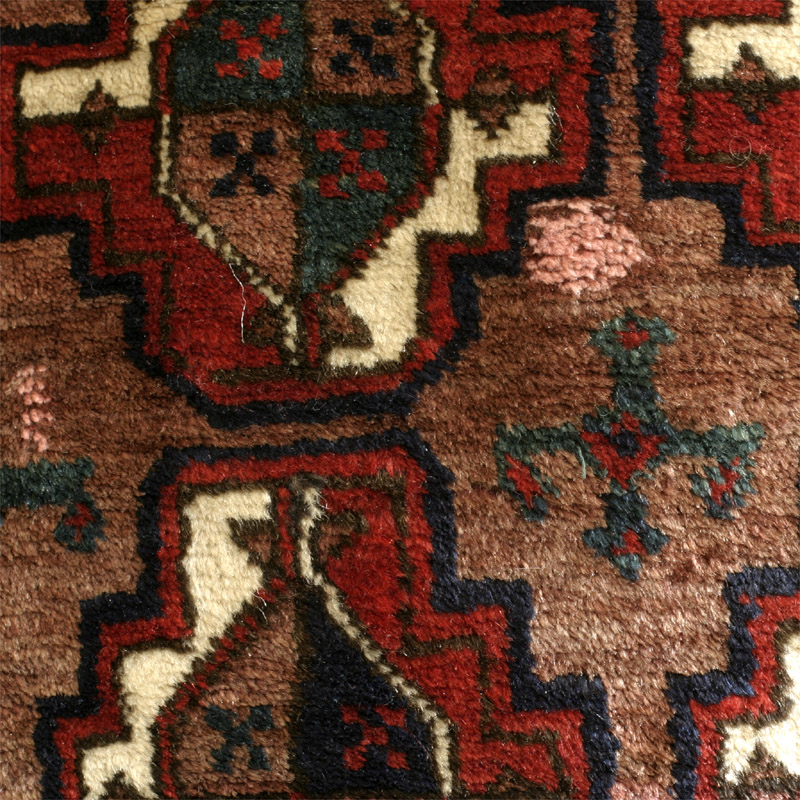

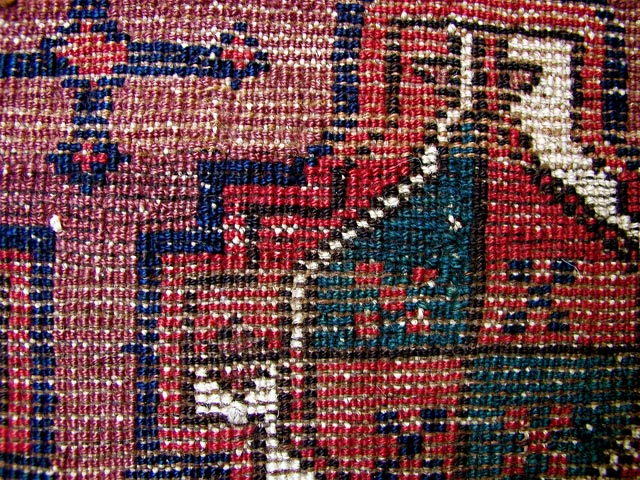
For comparison, I include the Craycraft image of the rug, a very saturated (I think over-saturated) image (the picture of the back immediately above is also from the Craycraft series of images):
